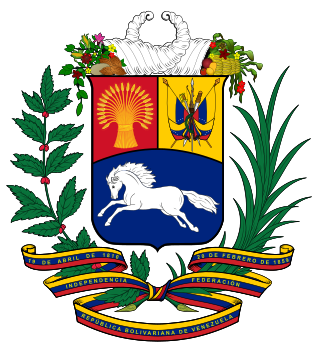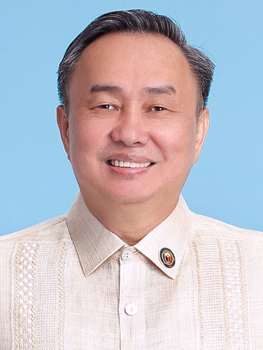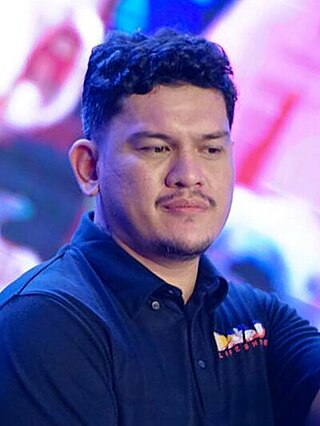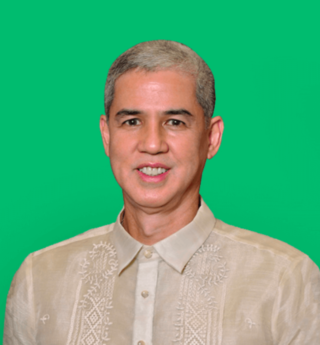
The Government of Colombia is a republic with separation of powers into executive, judicial and legislative branches. Its legislature has a congress, its judiciary has a supreme court, and its executive branch has a president.
The United States order of precedence is an advisory document maintained by the Ceremonials Division of the Office of the Chief of Protocol of the United States which lists the ceremonial order, or relative preeminence, for domestic and foreign government officials at diplomatic, ceremonial, and social events within the United States and abroad. The list is used to mitigate miscommunication and embarrassment in diplomacy, and offer a distinct and concrete spectrum of preeminence for ceremonies. Often the document is used to advise diplomatic and ceremonial event planners on seating charts and order of introduction. Former presidents, vice presidents, first ladies, second ladies, and secretaries of state and retired Supreme Court justices are also included in the list.

The Pwersa ng Masang Pilipino, formerly Partido ng Masang Pilipino, is a populist political party in the Philippines. It is the political party of former Philippine President Joseph E. Estrada. In the May 1998 presidential election, it aligned itself with other political parties to form the Laban ng Makabayang Masang Pilipino.

The Democratic Party of Guam is a political party in Guam affiliated with the U.S. Democratic Party. Its origins lie in the Popular Party, which was the only political party on Guam until 1956.

Wang Qishan is a Chinese retired politician who was one of the leading members of the Chinese Communist Party (CCP).

The government of the Philippines has three interdependent branches: the legislative, executive, and judicial branches. The Philippines is governed as a unitary state under a presidential representative and democratic constitutional republic in which the president functions as both the head of state and the head of government of the country within a pluriform multi-party system.

The Cabinet of Ministers of Venezuela (Spanish: Gabinete de Ministros de Venezuela is one of the bodies that make up the Venezuelan executive in that country's presidential system, alongside the Council of Ministers. The Cabinet is headed by the president of Venezuela, and his corresponding vice president. The purpose of the ministries is to create, adopt, follow and evaluate policies, strategies, programs and projects in accordance with the constitution and the laws of the republic.

The New York State Democratic Party is the affiliate of the Democratic Party in the U.S. state of New York. Its headquarters are in Manhattan, and it has an office in Albany.
The National Conference of Democratic Mayors is the representative body of city mayors in the United States affiliated to the Democratic Party, in the same way that the Democratic Governors Association represents state governors within the party. Founded in the 1970s, the National Conference of Democratic Mayors serves as a forum for Democratic mayors to discuss their goals and objectives with other mayors, party organizations, the Democratic National Committee, and private business partners. The organization provides resources for mayors such as talking points, newsletters, and fact sheets.
The Government of Zamboanga City, also known as the Zamboanga City Government is the local government unit in-charge of the City of Zamboanga. It is a mayor-council form of government supervised directly by the President of the Philippines and the Secretary of the Interior and Local Government.

The City Mayor of Manila is the head of the executive branch of Manila's city government. The mayor holds office at Manila City Hall. Like all local government heads in the Philippines, the mayor is elected via popular vote, and may not be elected for a fourth consecutive term. In case of death, resignation or incapacity, the vice mayor becomes the mayor.
Local elections were held in the Philippines on May 13, 2013, the same day and on the same ballot as national elections. Elected were governors, mayors and council members of Philippine provinces, Philippine cities and Philippine municipalities. Separate elections for barangay officials were held on October.

Abraham "Bambol" Ng Tolentino is a Filipino politician who currently serves as the Mayor of Tagaytay and President of the Philippine Olympic Committee. He previously served as representative of Cavite's 8th district from 2019 to 2022 and the 7th district from 2013 to 2019.

The mayor of Davao City is the chief executive of the government of Davao City in Davao Region, Philippines. The mayor leads the city's departments in executing ordinances and delivering public services. The mayorship is a three-year term and each mayor is restricted to three consecutive terms, totalling nine years, although a mayor can be elected again after an interruption of one term.

Gong Zheng is a Chinese politician who serves as Mayor and Chinese Communist Party Deputy Committee Secretary of Shanghai. He was formerly Governor of Shandong Province, the CCP Secretary of Hangzhou, the capital of Zhejiang province, and before that, Vice Governor and Executive Vice Governor of Zhejiang, and deputy director of the General Administration of Customs. He graduated from the University of International Business and Economics (UIBE).

The 2018 Tennessee gubernatorial election took place on November 6, 2018, to elect the next governor of Tennessee, alongside other state and local elections. Incumbent Republican Governor Bill Haslam was term-limited, and is prohibited by the Constitution of Tennessee from seeking a third consecutive term. Republican candidate Bill Lee was elected with 59.6% of the vote, defeating Democratic nominee and former Nashville mayor Karl Dean.

The governor of Negros Occidental is the local chief executive and head of the Provincial Government of Negros Occidental. Along with the governor of Negros Oriental and the mayor of the highly urbanized city of Bacolod, he serves as one of the chief executives of Negros Island in the Philippines.

Local elections in the Philippines were held on May 9, 2016. This was conducted together with the 2016 general election for national positions. All elected positions above the barangay (village) level were disputed.

Local elections in the Philippines were held on May 13, 2019. This was conducted together with the 2019 general election for national positions. All elected positions above the barangay (village) level were disputed. The following positions were disputed: